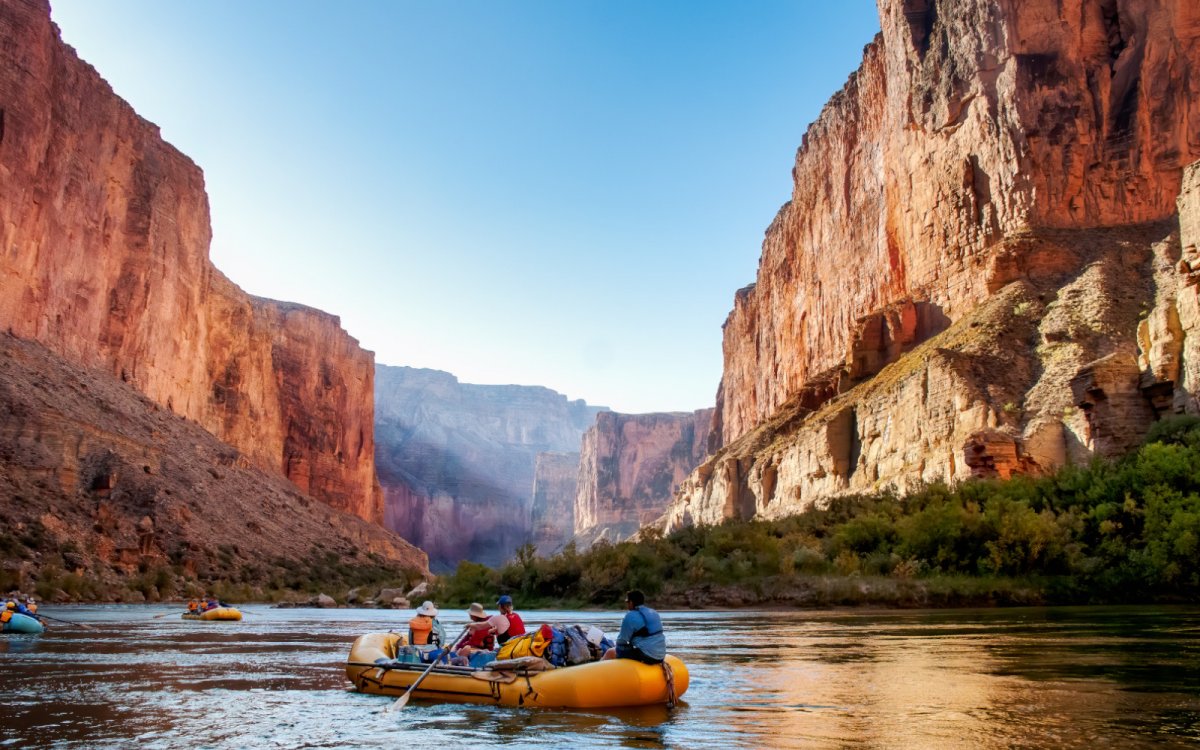A Transformation of the Backcountry Bathroom
“When you start putting diapers on the cows, we’ll start carrying out our waste!”
That was just some of the backlash that employees of the Bureau of Land Management received when they first encouraged people to use an early version of the modern-day groover.
So how did we go from disbelief at carrying out our own waste to embracing this portable toilet as an essential piece of river equipment?
Recently, Sam Carter from the River Radius podcast delved into the history of the Groover with some of the most influential people in its creation and implementation. He discusses the environmental degradation that led to the need for the groover and the organizations who were involved, as well as the behind-the-scenes researchers who played a vital role in creating change.
Rafters on the Colorado River, the incipience of the movement to improve toilet facilities and solutions on American Rivers
A Less Than Pristine Wilderness
In 1969, Helen Howard (now the owner of Desert River Kayak, Canoe, and Float Tubes) was coming around a corner of the Colorado River, only to be bombarded by the sound of thousands of flies and the horrendous smell of a pit toilet. Rather than camping surrounded by this unbearable stench, she and her group continued downstream to a beach that was still far from the pristine wilderness most people expected when venturing into the Grand Canyon.
As Jeff Ingram, the author of “Hijacking a River: A Political History of the Colorado River in the Grand Canyon” explains, only around 1,100 people ran the Colorado River in 1966. Six years later and that number had increased to 16,000. When it came time to relieve themselves, each of these people were walking off to find a place on the sand or up the bank, digging a hole (perhaps with toilet paper thrown in) and then covering it up.
On Jeff’s trip down the Colorado River in 1966, it was evident that this wasn’t working. The action of wind and rain was uncovering the waste and the sheer lack of room on the beaches meant it wasn’t going to be sustainable in the long term. In addition, people were burning their rubbish on the beaches and leaving ashes, and even taking wood from the river banks to fuel their fires. The degradation of the natural environment struck Jeff…and he wasn’t the only one.
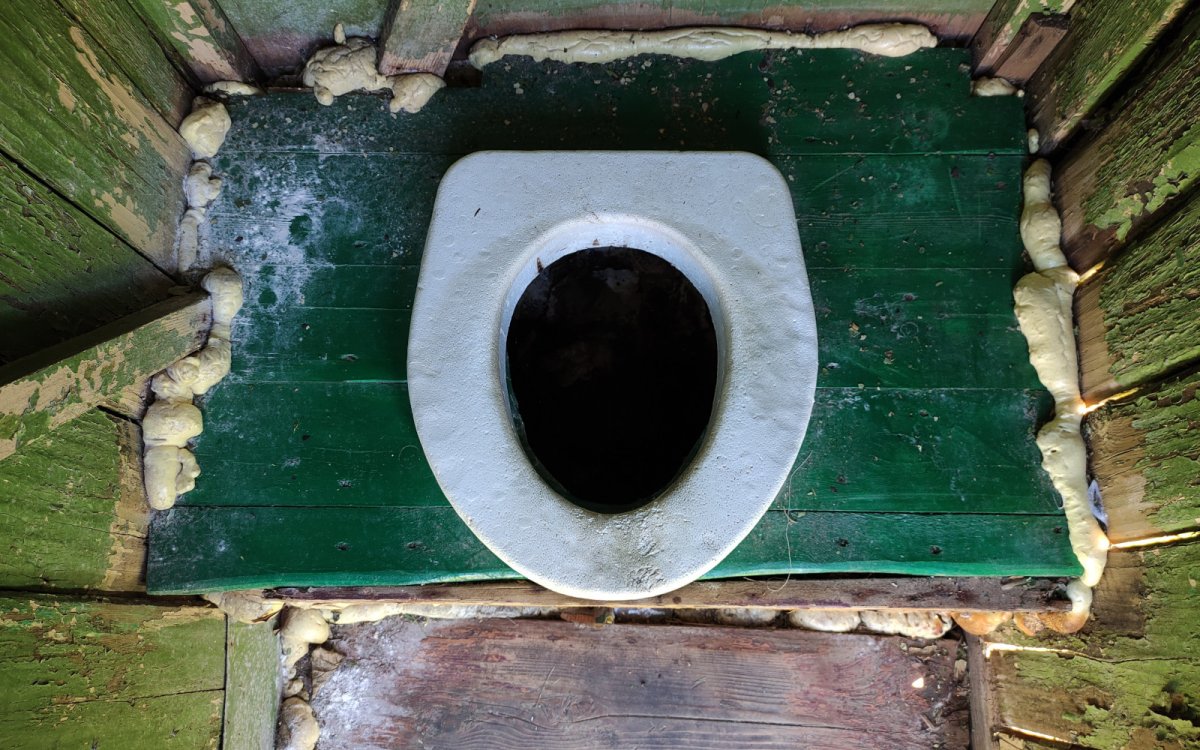
The Problem with Pit Toilets
In 1967, Stewart Udall, the Secretary of the Interior, took a family trip down the Colorado River and on completion, issued an order to, as Ingram put it, “clean up this foul canyon”. It was a catalyst for the U.S. National Park Service to take action. Their solution? Pit toilets.
At the time, Jeff was working with the Sierra Club, who didn’t agree with this approach. Their principle was that if it was a wilderness area, you don’t start building things in it. Otherwise, you start with pit toilets and before you know it, there will be picnic benches, fire pits, and the list goes on.
He was invited to a meeting with Howard Strickland Superintendent of Grand Canyon National Park and the head of the Westward River Guides Association, Ken Slight, to discuss the issue. Each had a different idea. The park wanted to install pit toilets, the WRGA said that they knew how to run the river and would take care of it while the Sierra Club believed that whatever you carried in should be carried out. The other two laughed at Jeff in response.
So what happened? The National Park Service went ahead and installed pit toilets. They were constructed from framed plywood on three sides and with limited coverage on the fourth so that you weren’t visible from the waist down. Helen Howard described them as being “open” and “horrible”. She didn’t go anywhere near them. Pretty soon, the pit toilets were so overused that nobody wanted to use them - they stank and they were attracting vermin. Luckily for the National Park Service, they burned down before they had an opportunity to take them out.
But it was clear that people pooping anywhere at their will was not an alternative. It was at this point that river outfitters started carrying porta-potties - a plastic box with a seat on top, and a blue chemical in it, that could be placed somewhere suitable at the river camp overnight. In the morning the contents were poured into a hole and covered up. Eventually, blue blotches began appearing on the beaches as wind and rain eroded the sand. It might have been a step in the right direction but it wasn’t a solution.
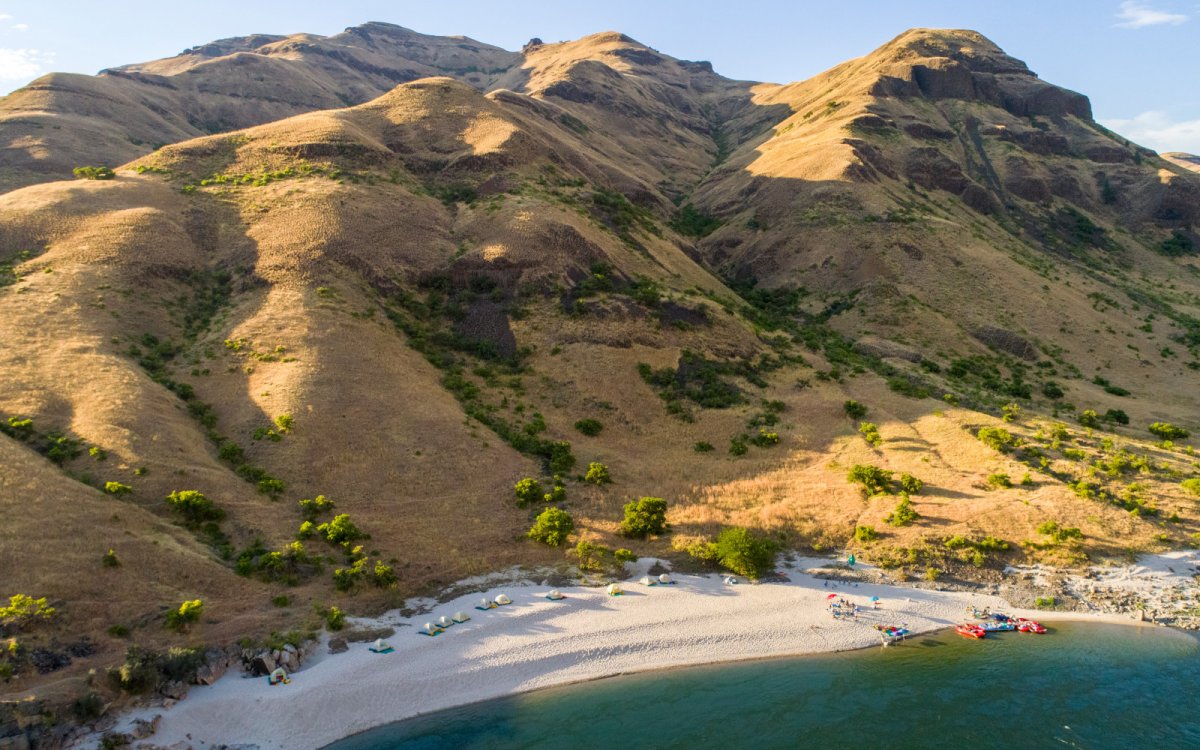
A beautiful white sandy beach makes home to a rafting group along the Salmon River Canyons in Idaho. Just imagine, blue splotches all over this pristine wilderness area!
A Three-Year River Research Study
As the number of people running the river grew exponentially, a Republican senator from Arizona, Barry Goldwater, got involved. He realized that if the environmental degradation continued, the river would soon be ruined and he demanded that something was done by the National Park Service to manage it better.
In response, they put a hold on the increase in numbers, and the NPS was given money to conduct a thorough research program to figure out what was happening and make recommendations. Taking place over three seasons, they had competent and respected individuals on the river observing the behavior of people and documenting the conditions.
Steven Carothers, who was working in Flagstaff at the Museum of Arizona, led the team and has been credited with developing the modern Groover system ( originally it was nicknamed the “Carothers Crapper”. Initially, he and his team completed a survey of the wildlife and the ecological system, as well as the human impact on the camping beaches. He took folks from the County Health Department to the beaches to take samples and described the levels of contaminants they recorded as “off the charts”.
In response, Steve began experimenting with a solution, which began with army surplus ammunition boxes. He put a memo out to his colleagues to “shit for science”, offering a can of coke or a candy bar for anyone who was willing to poop in the cans and let his team experiment with their feces.
While they knew that the feces was producing methane gas, it wasn’t until one blew up that they realized they needed to find an agent to kill it. By attaching balloons to different samples and seeing how big they got under various temperatures, it rapidly became clear that formaldehyde was the most effective. But they soon discovered that formaldehyde was nasty (and carcinogenic) and settled on baking soda, which is the system that’s still in use today.
Steve published his findings in “Down River” magazine (see the original and full article Down River Article), recommending that people line the ammo box with double green plastic bags, then attach a white kitchen bag to a ringed toilet seat. Each day, you just needed to replace the white plastic bag while the double green ones acted as protection against spillage. Initially, these deposits were being thrown into the “dead dog hole” at landfill sites, joining decomposing animals. But with so much plastic involved, it was clear that the poop wasn’t going to be able to decompose effectively.
The Groover is Born!
So that’s when people started pooping straight into the rocket box and the groover was born by 1974. You might be wondering how it got its name? From the grooves that were left on your behind and back of your thighs after sitting on the box (sans toilet seat).
Steve says that one of the struggles was encouraging people not to pee in the boxes as they ended up filling up too quickly. In fact, they started encouraging people to pee directly in the river to avoid the build-up of urine on the beaches, with studies showing that through dilution, this made almost zero impact on the ecosystem.
Aside from dealing with bodily waste, Steve’s team also looked at the impact of dumping greasy dishwater on the beach after watching ants carrying large balls of grease-clogged dirt back to their nests. Again, they discovered that dumping chicky pails directly into the river was the best option and led to little if no perceptible change in the water quality. When it came to dealing with the dark gray patches on the beach that had become stained by charcoal and ash, it was decided that dumping the ash into a rocket box and carrying it out would become the new normal.
Steve says that the guides were “maniacal” about picking up refuse and keeping the rivers clean, so they had no issue making changes in the way they dealt with poop, dishwater, and charcoal. As the Grand Canyon guides went to work on other rivers throughout the United States, they took these new innovations with them and the groover slowly spread.
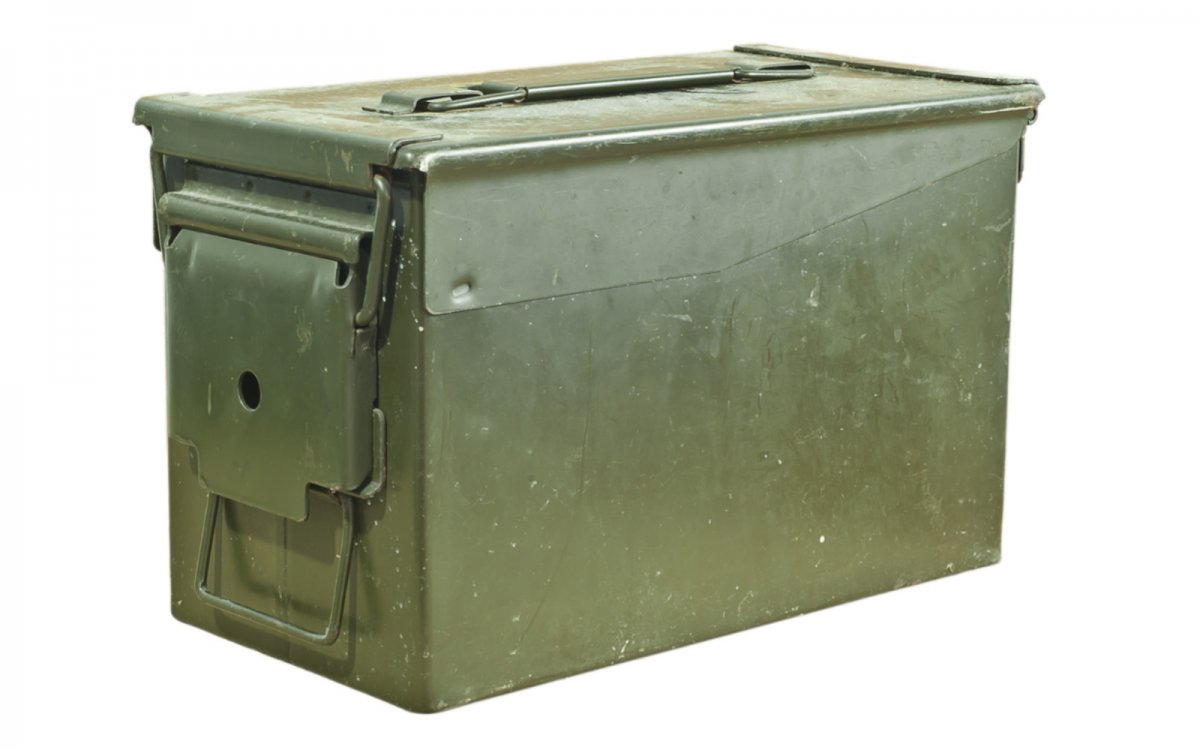
An old ammunition can similar to what was used as the "rocket box", eventually earning it name the Groover from the grooves that were left on your behind and back of your thighs after sitting on the box
The Groover Beyond the Grand Canyon
At the time, Luverne Grussing was working for the Bureau of Land Management on the Salmon River and was conducting river patrols on a regular basis. They would pick up old tires and clean up firewood, as well as removing human waste. Although the problem wasn’t as extensive as in the Grand Canyon, he knew that something had to be done and through conversations with river guides that also worked in the Grand Canyon, discovered that there was a better way.
The Salmon River was too steep and isolated for pit toilets, so they started a carryout program in 1982 that was based on the Grand Canyon models. Using plastic buckets from a local McDonalds, they constructed carryout toilets and gave them to people at launch sites or along the river, along with plastic bags and odor reducers. While commercial outfitters were onboard, not everybody was and it took a bit of conversation and education to get people to understand the extent of the issue. “When we pulled into a beach where people were camped, we had a raft loaded with 20 tires, which started a conversation about cleaning up the river.” People appreciated what they were doing and could understand the detrimental impact their waste was having on the environment.
The next issue was what to do with the human waste at the end of the trip, as few of the takeouts had any kind of facilities to deal with it and the landfills certainly didn’t want it. That’s when Laverne and his team started working on the SCAT (Sanitizing Containers with Alternative Technology) machine. Together with his river rangers, John and Cindy, they built a prototype for depositing waste into a sewage system and made an agreement with a local community to install the machine there. The waste would go into their municipal sewage system and the fee paid would cover any expenses involved. Today, you’ll find similar systems throughout the United States.
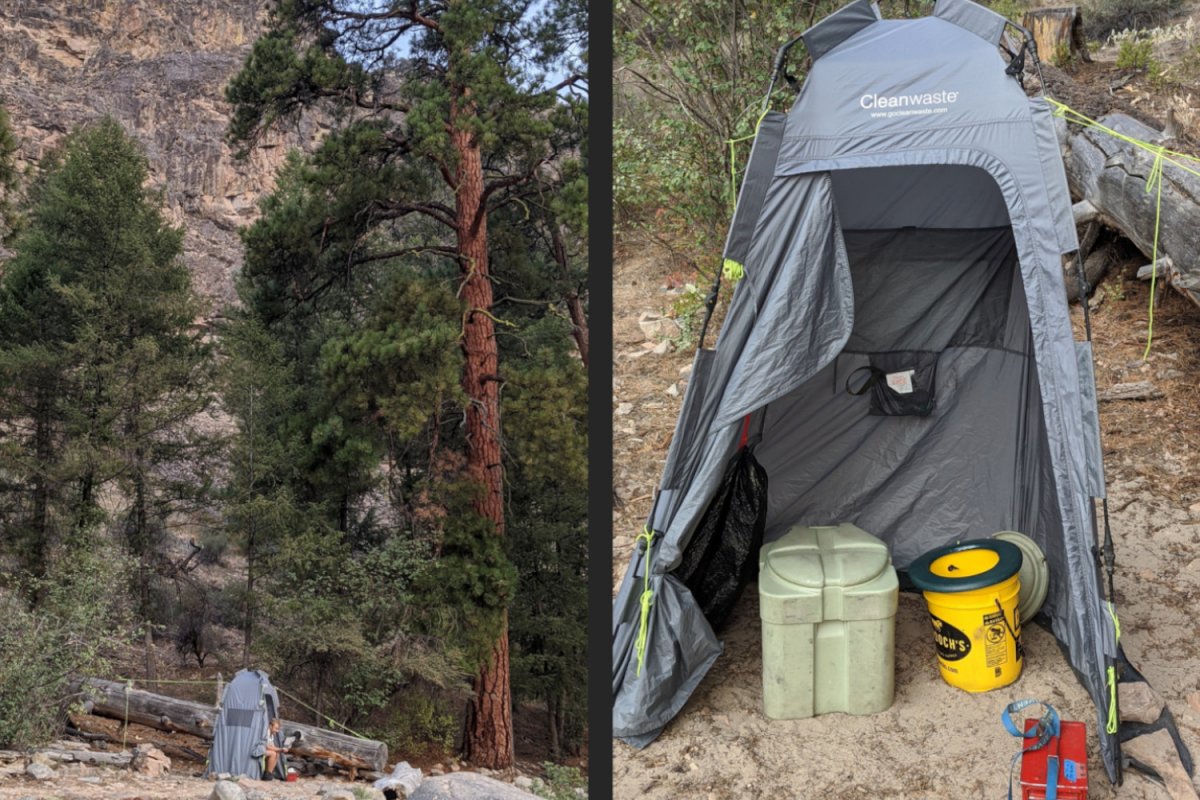
The ROW groover set up and in action on a Middle Fork of the Salmon River rafting trip in Idaho. River Guides take great pleasure in finding the most scenic locations to place the groover!
Recognizing River Activists
Sam Carter’s deep dive into the history of the groover is fascinating, to say the least, and touches on just some of the stories that these “poop boxes” have contributed to river life - from the incredible views they offer while doing your business to all the crazy things that have happened while “grooving”. But most importantly, it’s a podcast episode that recognizes and celebrates those who pushed for change and experimented with systems that led to the modern groover. Because without them, our rivers would be far from the incredible wildernesses we know today.
To listen to the full episode of “History of the Groover”, head to Sam Carter’s River Radius podcast.
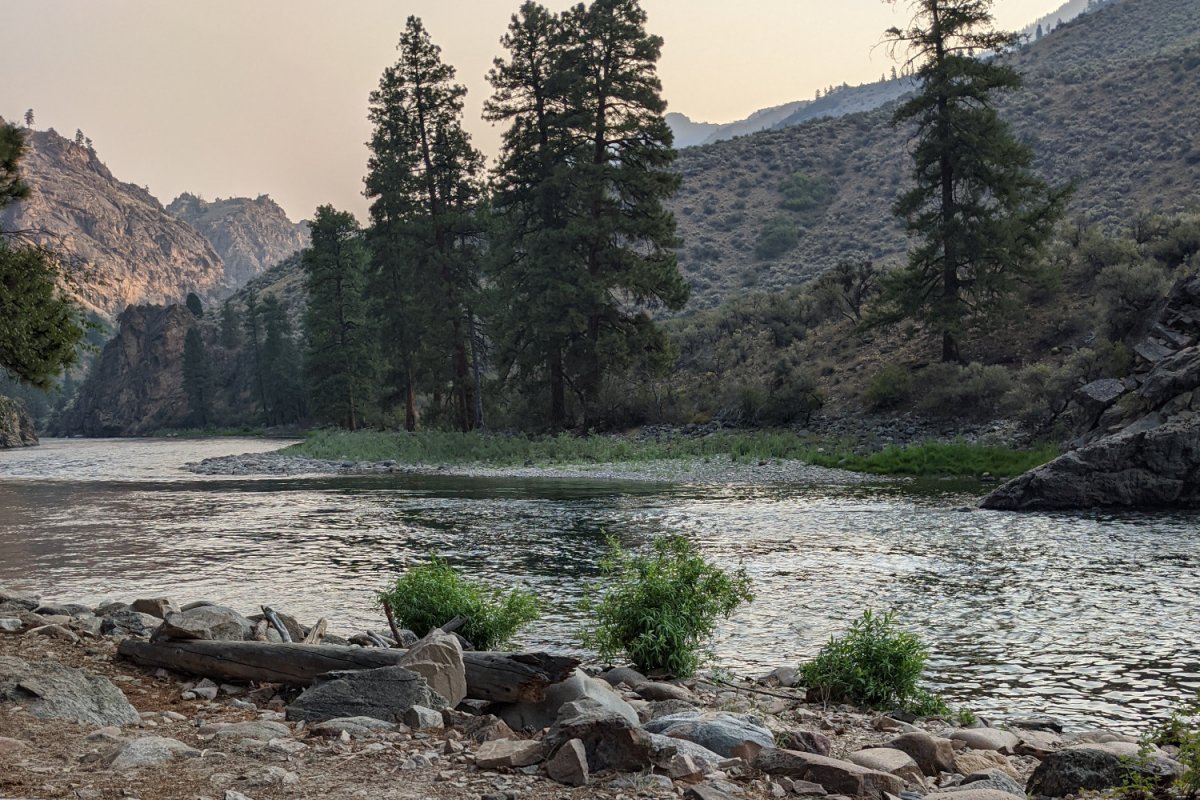
A peaceful view of the Salmon River in Idaho taken from the seat of the groover! Who needs a squatty potty to relax when you have a view like this?
We hope you enjoyed reading the fascinating history of the modern day groover. Next up, come join us on a multi-day rafting trip and find your own groove!

